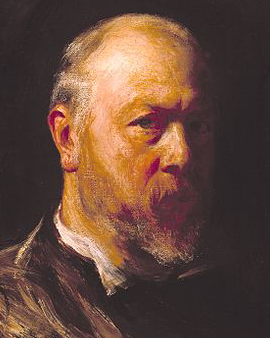


Immerse yourself in the exquisite world of John Pettie, an important 19th-century painter whose rich legacy endures today as high-quality fine art prints. Born on March 17, 1839 in the picturesque city of Edinburgh, Pettie became an artist whose work shaped the aesthetics of London during the heyday of the Royal Academy. He entered the bright stage of the art scene in 1866, when he was admitted to the prestigious Royal Academy, and within a decade rose to become a full academician. Pettie was not only a gifted artist, but also a passionate amateur musician who recognized and nurtured the potential of emerging talent. He made a remarkable connection with the young composer Hamish MacCunn. Pettie used his own studio as a forum for MacCunn's concerts and also acted as father-in-law when MacCunn married his daughter Alison in 1888. MacCunn's presence remained embedded not only in Pettie's personal life, but also in his artistic life, often serving as a model for numerous paintings and sketches by the artist.
John Pettie, born to Alexander and Alison Pettie, spent his early years in Edinburgh before his family moved to East Linton, Haddingtonshire, in 1852. His artistic path was not always easy, but his undeniable talent overcame his father's initial misgivings. A portrait of the local porter and his donkey served as the catalyst for Pettie's art career and sparked his father's approval. As a young artist, Pettie worked at the Trustees Academy in Edinburgh under the renowned Robert Scott Lauder and collaborated with a number of other talented artists of his time. Pettie's creativity flourished in this artistic environment, inspired by Sir Walter Scott's novels and his love of painting, which was reflected in exhibitions such as "A Scene from the Fortunes of Nigel" and "The Prison." The success of these works led to his recognition by the Royal Academy and encouraged him to settle in London in 1862.
During his London years, Pettie rose up the ladder of the Royal Academy, receiving Associate status in 1866 and full academic honors in 1874 as successor to Sir Edwin Landseer. His contributions to the art scene of the time were varied, ranging from book illustrations to portraits of prominent figures. Today, some of his most notable works can be admired in prestigious institutions such as the Tate Gallery and the Scottish National Portrait Gallery. In the age of fine art prints, we are bringing Pettie's work to life by carefully reproducing his artwork and presenting it at the highest level. Each fine art print found in our collection is a tribute to John Pettie's living legacy and an opportunity for art lovers to own and appreciate his stunning works. Consider it an invitation to hold a part of this rich artistic history in your hands.

Immerse yourself in the exquisite world of John Pettie, an important 19th-century painter whose rich legacy endures today as high-quality fine art prints. Born on March 17, 1839 in the picturesque city of Edinburgh, Pettie became an artist whose work shaped the aesthetics of London during the heyday of the Royal Academy. He entered the bright stage of the art scene in 1866, when he was admitted to the prestigious Royal Academy, and within a decade rose to become a full academician. Pettie was not only a gifted artist, but also a passionate amateur musician who recognized and nurtured the potential of emerging talent. He made a remarkable connection with the young composer Hamish MacCunn. Pettie used his own studio as a forum for MacCunn's concerts and also acted as father-in-law when MacCunn married his daughter Alison in 1888. MacCunn's presence remained embedded not only in Pettie's personal life, but also in his artistic life, often serving as a model for numerous paintings and sketches by the artist.
John Pettie, born to Alexander and Alison Pettie, spent his early years in Edinburgh before his family moved to East Linton, Haddingtonshire, in 1852. His artistic path was not always easy, but his undeniable talent overcame his father's initial misgivings. A portrait of the local porter and his donkey served as the catalyst for Pettie's art career and sparked his father's approval. As a young artist, Pettie worked at the Trustees Academy in Edinburgh under the renowned Robert Scott Lauder and collaborated with a number of other talented artists of his time. Pettie's creativity flourished in this artistic environment, inspired by Sir Walter Scott's novels and his love of painting, which was reflected in exhibitions such as "A Scene from the Fortunes of Nigel" and "The Prison." The success of these works led to his recognition by the Royal Academy and encouraged him to settle in London in 1862.
During his London years, Pettie rose up the ladder of the Royal Academy, receiving Associate status in 1866 and full academic honors in 1874 as successor to Sir Edwin Landseer. His contributions to the art scene of the time were varied, ranging from book illustrations to portraits of prominent figures. Today, some of his most notable works can be admired in prestigious institutions such as the Tate Gallery and the Scottish National Portrait Gallery. In the age of fine art prints, we are bringing Pettie's work to life by carefully reproducing his artwork and presenting it at the highest level. Each fine art print found in our collection is a tribute to John Pettie's living legacy and an opportunity for art lovers to own and appreciate his stunning works. Consider it an invitation to hold a part of this rich artistic history in your hands.
Page 1 / 1






